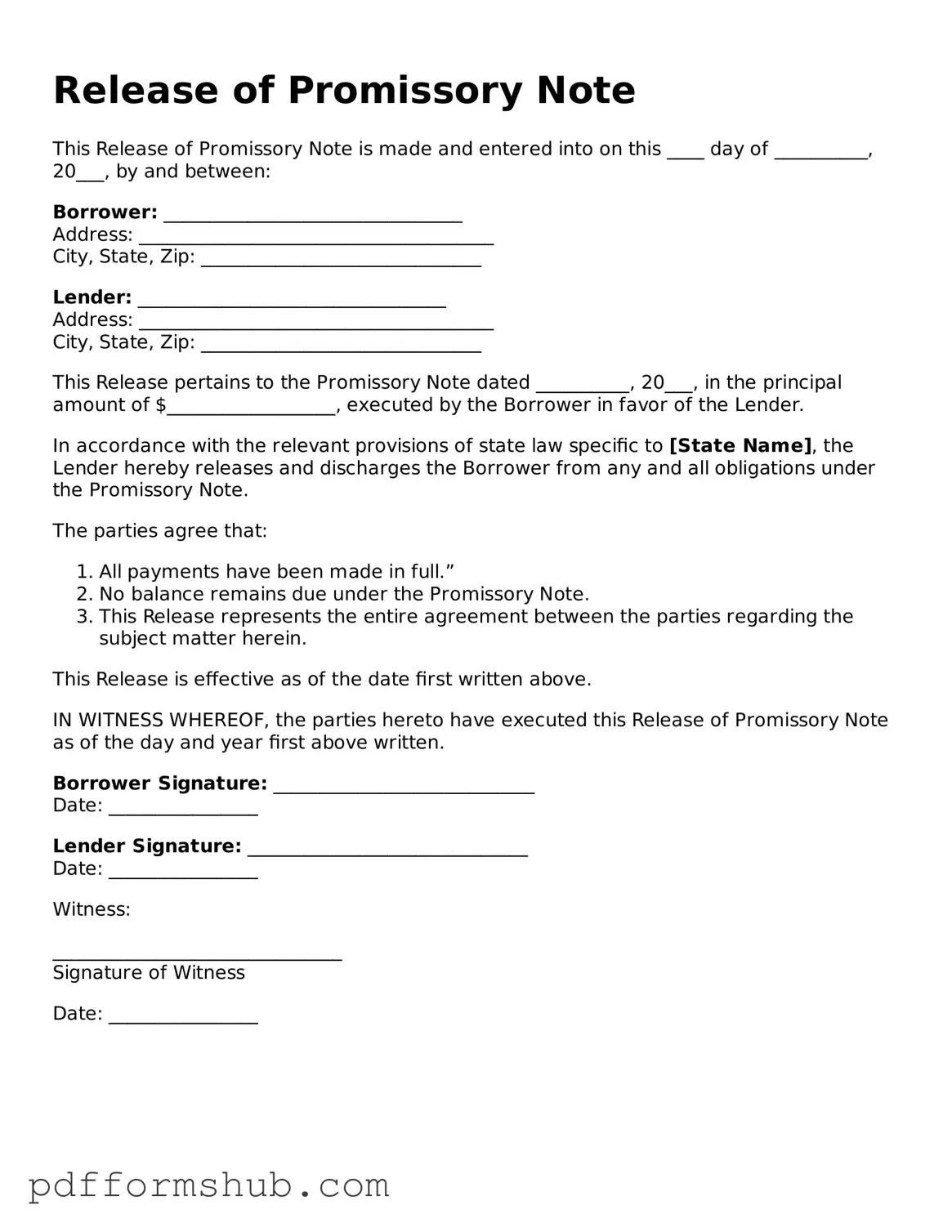The Release of Promissory Note form is an essential document for anyone involved in a loan agreement. This form signifies the completion of a loan transaction, providing a clear record that the borrower has fulfilled their obligations. By signing this form, the lender officially acknowledges that the debt has been paid in full, releasing the borrower from any further financial responsibility related to the promissory note. This release not only protects the borrower from future claims but also serves as a crucial piece of evidence in case of disputes. It typically includes key details such as the names of the parties involved, the original amount of the loan, and any relevant dates. Understanding this form is vital for both lenders and borrowers, as it ensures that all parties are on the same page and that the transaction is documented properly. Whether you are a borrower eager to move forward or a lender ensuring all paperwork is in order, knowing how to navigate the Release of Promissory Note form is crucial for a smooth and transparent financial relationship.
